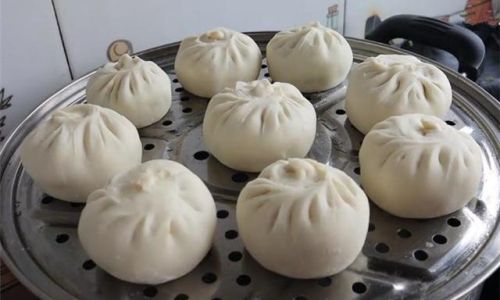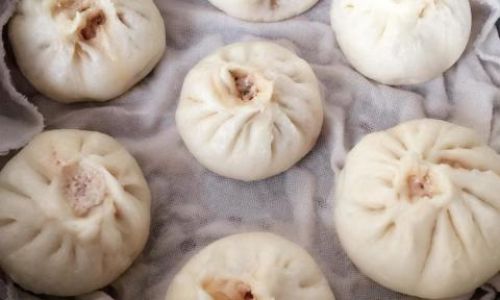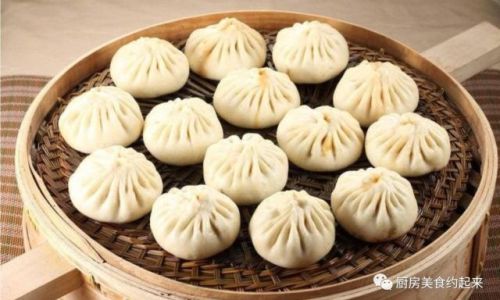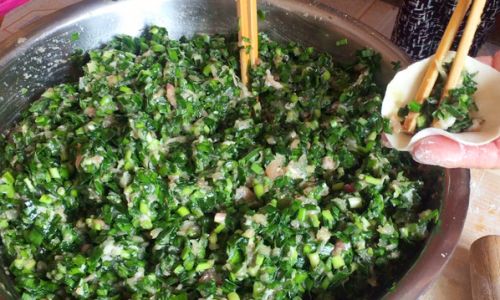Introduction
Steaming baozi, those fluffy, pillowy Chinese steamed buns filled with savory or sweet fillings, is both a science and an art. While the process of kneading the dough, preparing the fillings, and steaming the buns to perfection requires precision, one often-overlooked step holds the key to achieving baozi that are soft, springy, and visually appealing: waiting a few minutes after steaming before removing them from the pot. This brief pause might seem inconsequential, but it plays a pivotal role in ensuring the buns maintain their shape, texture, and moisture balance. In this comprehensive guide, we will explore the science behind this critical step, debunk common myths, and provide actionable tips to elevate your baozi-making game.
The Science of Steaming Baozi
To understand why waiting matters, we must first grasp the basics of steaming. When baozi are placed in a steamer, the high-temperature steam cooks the dough rapidly. The heat causes the starches in the flour to gelatinize, creating a soft, cohesive structure, while the proteins in the dough (gluten) set, providing elasticity. Simultaneously, the moisture from the steam hydrates the dough, making it pliable and tender. However, the steaming process does not end the moment you turn off the heat. Residual heat continues to circulate inside the pot, and the buns themselves retain a significant amount of thermal energy.
Why Immediate Removal Is a Mistake
Imagine opening the steamer lid the instant the timer dings. What happens? The buns, still swollen from the heat, deflate rapidly. Their surfaces wrinkle, and the once-smooth tops collapse into creases. This phenomenon occurs because the sudden drop in temperature and pressure causes the moisture inside the buns to condense rapidly. The steam trapped within the dough lacks time to redistribute evenly, leading to uneven cooling and structural instability. In essence, the buns are still “cooking” internally even after the heat source is removed.

The Role of Residual Heat and Moisture Redistribution
During the waiting period, several processes occur simultaneously:
- Carryover Cooking: The residual heat in the buns and the steamer continues to gently cook the dough, ensuring the center reaches the ideal temperature without becoming gummy.
- Moisture Equilibrium: The steam trapped inside the buns condenses slowly, allowing the moisture to spread evenly throughout the dough. This prevents dry patches and ensures a uniform texture.
- Structural Stabilization: As the buns cool slightly, the gluten network firms up, locking in the air pockets created during steaming. This results in a bouncy, springy texture that holds its shape.
The Optimal Waiting Time: 5–10 Minutes
Most recipes recommend waiting 5–10 minutes after steaming before removing the lid. This window allows the buns to cool gradually without sacrificing their plumpness. However, the exact time can vary based on factors like:
- Ambient Temperature: In colder kitchens, buns may cool faster, requiring a slightly shorter wait.
- Bun Size: Larger baozi (e.g., those stuffed with pork or char siu) may need closer to 10 minutes to stabilize.
- Steamer Material: Bamboo steamers retain heat longer than metal ones, potentially extending the waiting time.
Common Pitfalls and How to Avoid Them
- Opening the Lid Too Early: The most frequent error. Always resist the urge to peek—sudden temperature changes wreck the texture.
- Oversteaming: Leaving buns in the steamer for too long (even with the heat off) can dry them out. Set a timer for the waiting period.
- Ignoring Condensation: Water droplets from the lid can drench the buns. To prevent this, lay a clean kitchen towel over the steamer before closing the lid. The towel absorbs excess moisture.
Troubleshooting Guide: Why Did My Baozi Collapse?

-
Symptom: Deflated, wrinkled tops.
- Cause: Opened the lid too soon.
- Fix: Wait the full 10 minutes next time.
-
Symptom: Gummy or dense texture.
- Cause: Understeaming followed by immediate removal.
- Fix: Ensure steaming time is adequate (typically 15–20 minutes for standard-sized buns).
-
Symptom: Dry, cracked skin.
- Cause: Oversteaming or insufficient moisture in the dough.
- Fix: Add a touch more liquid to the dough and reduce steaming time by 1–2 minutes.
Advanced Tips for Baozi Perfection

- Use a Glass Lid: If your steamer has a glass lid, you can monitor the buns without lifting it, reducing temperature fluctuations.
- Rotate the Steamer Basket: If using a multi-tiered steamer, rotate the baskets halfway through steaming to ensure even heat distribution.
- Reheat Leftover Baozi Properly: To revive day-old baozi, steam them for 3–5 minutes (with a 2-minute wait) instead of microwaving, which can make them tough.
The Cultural Significance of Patience in Baozi-Making
In Chinese culinary traditions, patience is not just a virtue—it’s a necessity. Baozi, often served during festivals, family gatherings, or breakfasts, symbolize prosperity and unity. The act of waiting after steaming mirrors broader cultural values: haste leads to imperfection, while mindfulness yields harmony. For generations, home cooks have passed down this wisdom, knowing that rushing the process undermines both flavor and tradition.
Beyond Baozi: Universal Steaming Principles
The concept of resting steamed foods applies to other dishes too. For example:
- Mantou (Chinese Steamed Buns): Follow the same 5–10 minute rule.
- Tamales: Allow them to sit covered for 10 minutes after steaming to prevent crumbling.
- Dim Sum: Dumplings like har gow benefit from a brief rest to firm up their delicate skins.
The Impact of Altitude and Humidity
If you live at high altitudes or in a dry climate, adjust your steaming and waiting times:
- High Altitude: Lower boiling points mean longer steaming. Add 2–3 minutes to the cook time and wait a full 10 minutes.
- Humid Environments: Excess moisture in the air can make buns soggy. Use a slightly shorter steaming time (13–18 minutes) and ensure proper ventilation during the wait.
Innovations in Steaming Technology
Modern appliances like electric steamers with built-in timers and keep-warm functions have simplified the process. However, even these gadgets cannot replace the magic of the waiting period. Some bakers experiment with cold fermentation before steaming, claiming it enhances flavor—but the post-steaming rest remains non-negotiable.

Conclusion: The Final Step Toward Baozi Mastery
In a world obsessed with instant gratification, the act of waiting for baozi to rest after steaming feels almost revolutionary. It is a quiet rebellion against haste, a testament to the idea that beauty and flavor emerge from stillness. So the next time you steam a batch of these delectable buns, embrace the pause. Let the steam linger, the buns settle, and the anticipation build. When you finally lift the lid, you’ll be rewarded with pillows of perfection—a reminder that some things truly are worth the wait.






0 comments